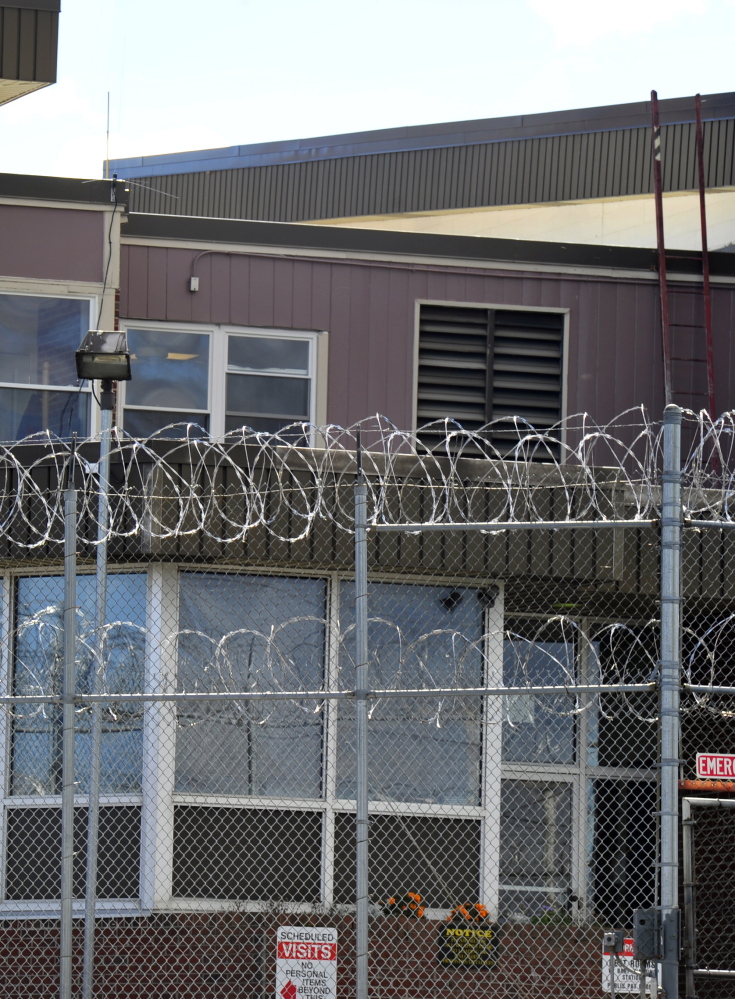WILTON — The proposal to borrow $175 million to build a new prison in Windham would not address the real problem in Maine corrections – the lack of inmate rehabilitation services.
Without these programs, building a new facility would only expand the warehousing of prisoners at an increased cost, placing additional burdens on inmates and families, and making communities less safe.
Maine’s incarceration rate has increased 300 percent since 1980 but there is no comprehensive rehabilitation program at any state facility.
Facilities with rehabilitation programs that provide opportunities to learn nonviolent conflict resolution, interpersonal communication, tolerance and employment training have low recidivism.
In the country of Norway, recidivism is 25 percent, because its programming is comprehensive and humane. The recidivism rate within five years of leaving a Maine facility is 60 percent.
Only one-third of state prison inmates have paying jobs. Most jobs pay abysmally low wages. For example, a dietary aide works 40 to 60 hours per week for $75 a month, or 47 cents per hour. This money is mostly used for phone calls and personal care. Inmates pay $5 to be seen at the infirmary for any new medical issue. Without saved money an inmate cannot support himself upon release, making recidivism likely.
Reducing recidivism requires a serious investment in rehabilitation. Reduced recidivism means fewer inmates, safer communities and a reduced need for more prisons.
It is clear that some buildings at Windham’s Maine Correctional Center should be torn down; the physical structure is unsafe. However, rather than borrow $175 million, these alternatives should be considered first:
n Transfer 100 inmates currently in the worst building at MCC to the unused pod at the Maine State Prison. This pod is being used by the DOC’s paramilitary Special Operations Group (SOG). The SOG could train in a building at MCC. This will relieve the stress placed on inmate veterans with PTSD traumatized by SOG percussion grenades.
n Use the money saved on programs that keep offenders out of prison, such as expanding restorative justice pilot projects. The restorative process has many benefits, including allowing the victim to be heard by the offender.
n Keep nonviolent drug offenders out of prison by diverting them into rehabilitation programs. According to the Maine Crime and Justice Data Book, “From 2003-12, arrests for drug abuse violations increased 8.4 percent. This rise is due to the increase in arrests for possession. Arrests for sales and manufacturing of drugs declined by 5.2 percent in the same period.”
Maine should also follow New Hampshire’s example by allowing prisoners to earn sentence reductions as rewards for participating in rehabilitative programs, skills training and education.
Today’s sentences are as much as 20 longer than the same crime committed in the 1970s. The result is a ballooning and aging prison population.
The state should make better use of its supervised community confinement policy to transfer aging, infirm and terminally ill inmates to nursing homes and other settings where they can receive appropriate care. This frees up prison space for violent criminals, provides more appropriate care for aging inmates and reduces costs.
Maine can also enhance the likelihood of successful re-entry into the community by affording the offender the opportunity to make a gradual re-entry. Reverse the recent change reducing furlough eligibility from five years remaining in a sentence to two years. The Legislature should pass a “fair chance” bill that removes the requirement to identify oneself as a felon on job applications. The state of Maine, the city of Portland and many Maine employers, including Wal-Mart, have already done this. This legislation would increase employment for people with criminal records and reduce recidivism.
And Maine should establish halfway houses allowing the 200 inmates now in the last year of their sentence and eligible for community confinement, to begin rebuilding their lives by working in the community.
The Maine Department of Corrections budget for this year is $171.5 million. It will be $174.7 million next year. Before debt service on $175 million borrowed to build a bigger prison is added to the current DOC appropriation, it is critical that we carefully review all means to reduce prison population; establish strategies and a goal to reduce recidivism; and develop rehabilitative services that will prepare inmates for re-entry into society.
Copy the Story LinkSend questions/comments to the editors.



Success. Please wait for the page to reload. If the page does not reload within 5 seconds, please refresh the page.
Enter your email and password to access comments.
Hi, to comment on stories you must . This profile is in addition to your subscription and website login.
Already have a commenting profile? .
Invalid username/password.
Please check your email to confirm and complete your registration.
Only subscribers are eligible to post comments. Please subscribe or login first for digital access. Here’s why.
Use the form below to reset your password. When you've submitted your account email, we will send an email with a reset code.